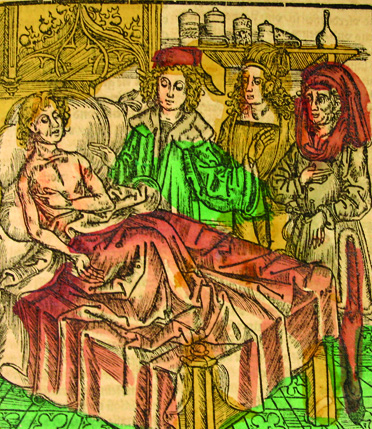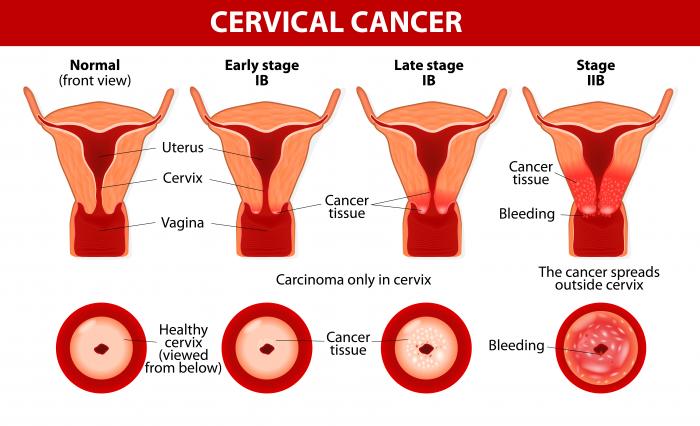| By: Paul S. Cilwa | Viewed: 4/16/2024 Posted: 4/13/2007 |
Page Views: 3478 | |
| Topics: #Conspiracy #History #HealthCare #Health | |||
| Let's look at the controversy over the new HPV vaccines. | |||

The world of previous centuries was one in which disease was rampant. Smallpox was especially vicious; Native Americans didn't have it until the Europeans brought it here and, with no natural immunity to the virus, dropped like flies—some estimates are that 90% of the native populations of North and South America were killed by smallpox alone, which spread faster than the explorers could travel, and thus rendered two continents available for colonization. (As the Church Lady would say, "Isn't that con-veen-ient!")
Europe in the 18th century was a largely rural place in which cows were a form of wealth and nearly every family had at least one, as well as "milkmaids" to care for them. Smallpox periodically made its way across the continent. It was well-known that, if a person survived smallpox, he or she would never get it again. Unfortunately, survival rates were not high; as the World Health Organization notes:
The disease, for which no effective treatment was ever developed, killed as many as 30% of those infected. Between 65–80% of survivors were marked with deep pitted scars (pockmarks), most prominent on the face.
Each time a smallpox epidemic spread, it left survivors who were immune to later infection—but that immunity was not passed on to children born after the epidemic. And so, each generation, a new epidemic would mount, killing the rabble with no less ferocity than the royal:
Smallpox killed Queen Mary II of England, Emperor Joseph I of Austria, King Luis I of Spain, Tsar Peter II of Russia, Queen Ulrika Elenora of Sweden, and King Louis XV of France.
Now, it was common knowledge, in this land of cows and milkmaids, that most milkmaids, independent of smallpox epidemics, came down with a mild disease called cowpox. The survival rate of this illness was near 100%. But the interesting thing was, once a person had had cowpox, that person was immune to smallpox! Milkmaids, therefore, could and did safely nurse their employers when the latter succumbed to the more severe disease.
When a smallpox epidemic raged around him in 1774, farmer Benjamin Jesty inoculated himself, his wife and his children by exposing them to the dried pus from smallpox victims, a method that had been practiced by the Chinese for centuries and by European royalty as early as two years earlier.
Jesty's wife became ill, but recovered. He and his children never even got sick.
It was shortly afterwards that Edward Jenner discovered that cowpox inoculations also conferred smallpox immunity, and with fewer side effects. Nevertheless, it was Cotton Mather who led the first inoculations of citizens in the New World. From Wikipedia:
Cotton Mather in Boston had a description of the African practice of inoculation from his slave Onesimus and encouraged its application, with considerable controversy and strife. Fearing the outbreak of an epidemic, the editor of the South Carolina Gazette published a detailed description of the inoculation process in the April 22, 1721 issue. In Boston, there was opposition from churchmen regarding the practice who regarded it as "bidding defiance to Heaven itself, even to the will of God". [Italics mine.]
At this point, it might be worthwhile to remind the reader that "churchmen" have long resisted efforts to improve the lot of mankind. When Benjamin Franklin invented lightning rods, it was the churchmen of Boston who protested that using lightning rods "thwarted the will of God" who presumably used lightning to mete out punishment to those who particularly annoyed Him. (And what a feeble god they must have worshipped, to think He would be unable to work around a lightning rod!) Lightning strikes were the primary cause of house fires, in those days, and so most people ignored the injunctions of their preachers and mounted lightning rods anyway. Soon, it was noticed that churches, with their high, pointed steeples and metal bells, were the only remaining targets of lightning; suddenly, lightning was no longer said to be the sign of God's wrath—and churches began mounting lightning rods of their own.
Now, two hundred years later, no one believes that God's will can be thwarted by a lightning rod. And yet, there are still organizations who rail against vaccinations—and they are mostly religious, and yes, they argue that vaccinations thwart the will of God!
The issue has come up again with the development of two new vaccines against the Human Papilloma Virus (HPV) that causes cervical cancer in women, and genital warts in both men and women. Although the religious extremists no longer complain about smallpox, measles or whooping cough vaccines given to our children, they have taken up arms against these new vaccines. Why? Because they remove yet another "punishment from God" (for having sex).
The virus, you see, is spread sexually; and thus the vaccine must be administered to young girls (and probably boys as well, if future tests show effectiveness) who have, hopefully, not yet had sex. And while any normal person would applaud any advance that will certainly prevent deaths (HPV killed almost 5,000 American women in 1998, but the disease is much more deadly in the rest of the world, killing well over half a million women a year, worldwide), that doesn't faze the religious extremists who believe God needs their help in punishing the sinful.
For reasons unclear, Christian extremists are repulsed, but oddly fascinated by, sex. They are particularly vehement that people not have any, especially people who aren't married—including gay people, from whom they wish to withhold the right to marry, despite Jesus' admonition that "Who God has put together, let no man break asunder." Christian extremists, you see, believe they know who God has put together; and they also don't trust God to be able to manage these things on His own.
So, just as their ancestors attempted to prevent the inoculation of Americans against smallpox, today's religious extremists want to prevent the inoculation of American girls against a disease that will almost certainly kill a percentage of them when they grow—if they ever have sex, whether consensually or not.
It is an ongoing tactic of religious extremists that they lie about who they are and what their motivations are. A typical group has the website http://www.novaccine.com. The front page looks normal enough, and even informative. I found them in an attempt to balance this essay by looking for objections to taking any vaccines. But when I went to the page labeled " authorities Speak Out," it says,
While the medical profession appears to be unified in praise of vaccination, there are thousands of doctors, historians, researchers and government authorities who do have hesitated to voice the truth.
he "thousands" of authorities are not named, and there is no citation—a common practice of the Christian extremists, who lie to support their positions far more often than they rely on any objective truth. Moreover, the above paragraph is followed by four pages of quotes from supposed "authorities". But, guess what: except for two, the remaining quotes all come from last century…and most of them come from the year 1900 or before. And one of the two 2002 quotes comes from the Christian Digest, not generally considered to be a peer-reviewed scientific source.
Too bad there isn't a vaccine against religious extremism.
Now, this is not to say there is no controversy over the efficacy, or safety, of vaccines. A particular element of concern is the preservative thimerosal, a mercury compound, which used to be used in all vaccines and, in some countries, still is. It was also found in eye drops; but when related cases of mercury poisoning (and resulting autism) were revealed, it was immediately removed from eye drops and began to be phased out of vaccines.
Many countries, such as Denmark, no longer allow thimoersal in any vaccines. However, in 2002,
This came immediately after passage of the Homeland Security bill, which contained a clause designed to protect Eli Lilly, the drug company giant that developed thimerosal, from lawsuits involving the additive. The bill specifically removes all liability from the pharmaceutical industry and health officials for the injuries and death resulting from the preservative. And now, use of thimerosal as a vaccine preservative is again on the rise, at least in the United States.
However, even with the danger thimerosal presents—and it is possible to request from your doctor thimerosal-free vaccines for your children—the odds are in favor of an inoculated child, versus an un-inoculated one, when it comes to contracting a childhood disease. And it seems likely that your little girl, should she grow to womanhood and become confronted with the pain (and possible death) of cervical cancer, would wish you'd allowed her to be vaccinated when she was young.
She might even wish a pox on the houses of those who prevented it.






